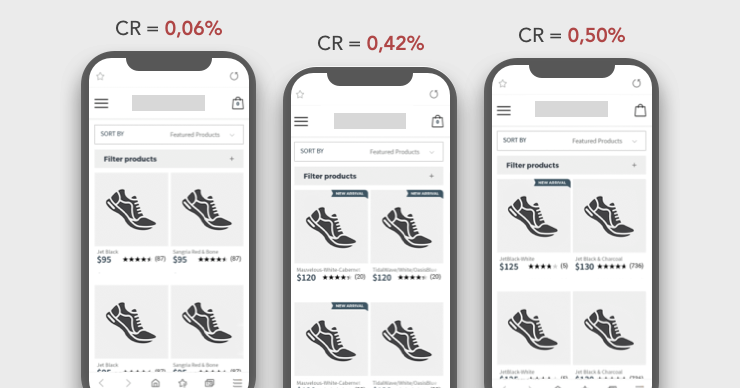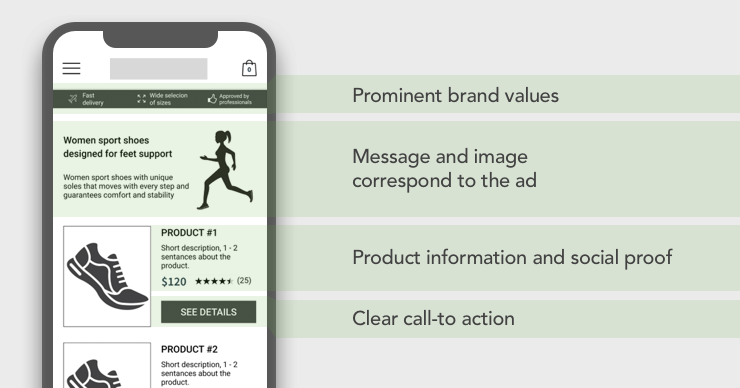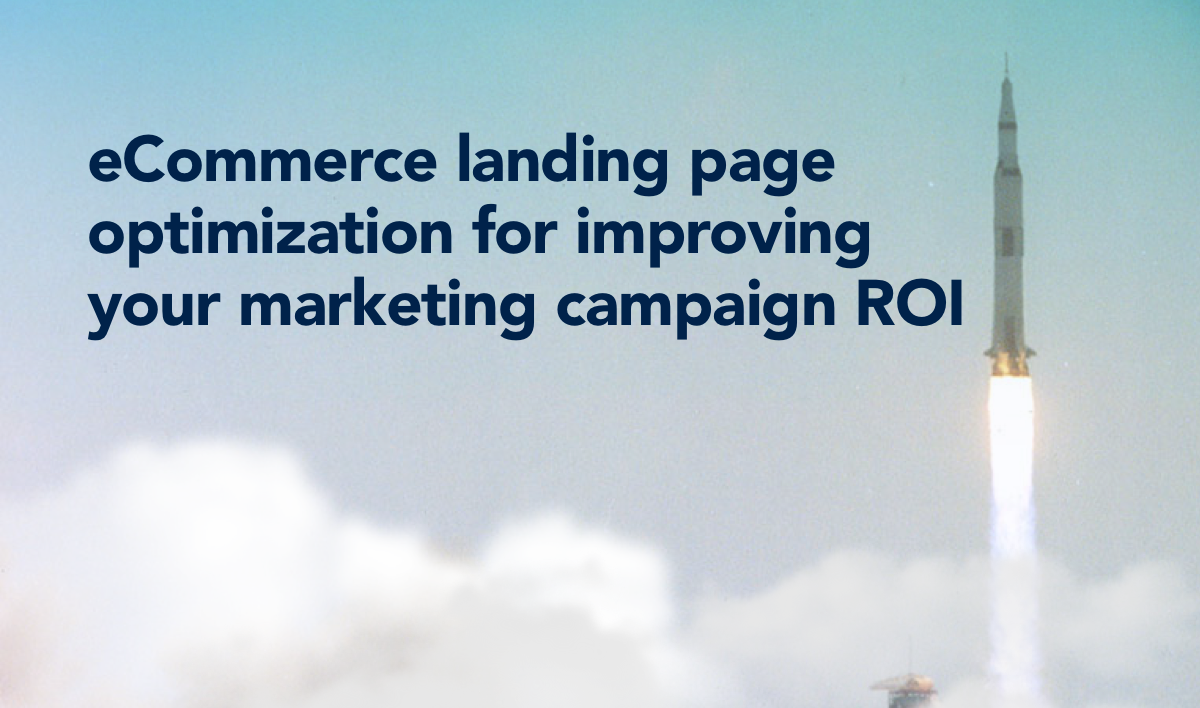Over the years, we have seen many cases where businesses focus solely on optimizing their marketing campaigns to drive more traffic to the website hoping to get more sales and later wondering why the traffic they paid for doesn’t convert.
Although there can be plenty of reasons why the traffic from paid marketing campaigns does not result in sales, non-optimized landing pages stand out as a central reason. In what follows, you’ll learn how to optimize your landing page for improved marketing campaign ROI.
What is a landing page?
To put it simply, a landing page is the page a visitor lands on when clicking on a link provided in your marketing campaigns, such as PPC ads, emails, social media campaigns, organic keyword oriented pages etc. It’s the visitor’s first interaction with your brand and, as everyone knows – first impression is king. Studies show that it takes 0.05 seconds for visitors to evaluate a landing page and make a decision about future action.
The image below shows the layouts of PPC landing pages one of our clients was sending traffic to.

Although the image above illustrates good and optimized product category pages, it’s not the best fitting landing page for marketing campaigns. As seen from the image, the conversion rate for those pages is extremely low and amounts to 0,33% on average (as opposed to an industry average of 2%). There are several reasons for that:
- The message of the ad is not present on the page;
- The brand’s value proposition is missing;
- There is no clear indication of the next step.
Therefore, the page doesn’t persuade visitors to explore the page, let alone make a purchase.
Landing page best practices
In order to convert visitors who come from paid traffic, there are several best practices you should follow:
1. Match content on the page with content on the ad
If the ad headline was what caught a visitor’s attention and made them click the ad, make sure the same headline is prominent on the page. Same applies for images – if there’s a picture on the display ad or social media post, make sure the same image is present on the page to create a cohesive customer experience.
2. Communicate brand value
Even though the product advertised is the perfect solution for a prospect’s problem, it’s still crucial to persuade the visitor that he/she should invest specifically in your brand. Quite often people do not buy products from specific brands, because they do not feel that brands have the same values as them.
3. Leverage social proof
Your landing page and ad content match, brand value proposition is clear and noticeable, but still, there’s something keeping visitors away from converting? Try incorporating social proof, such as product ratings, reviews, mentions from credible sources etc. to ensure visitors know that your brand is popular and socially renowned.
4. Create a clear and simple design
Although you might feel like there is a lot of information to include, it’s essential for the page to stay clear without any distracting elements. It should be obvious from a brief look at the page what is the main action, what is the next step – form submission, product details view or add the product to cart.
5. Tailor customer experience on the website to the audience
Last, but not least, make sure that the customer experience on the website is tailored to the audiences targeted by your campaigns. If the audience you target with your marketing activities are businesswomen in their 40s, incorporate images of women they can associate themselves with using your product, as well as adjust content to include words and phrases they are more likely to use.
Optimized eCommerce landing page example
Recall the example of the badly optimized landing page showed earlier in the article? We applied all the principles from above and ended up with the following template for eCommerce custom landing pages:

If you’re struggling to increase conversion rates for your marketing campaigns feel free to drop us a line at [email protected] or click the orange chat bubble in the bottom corner and we can kick off optimization of your landing pages within 24 hours.
Related articles:
What a 5-second usability test can reveal about your website
Case study: First steps for restructuring your AdWords account



Share on: